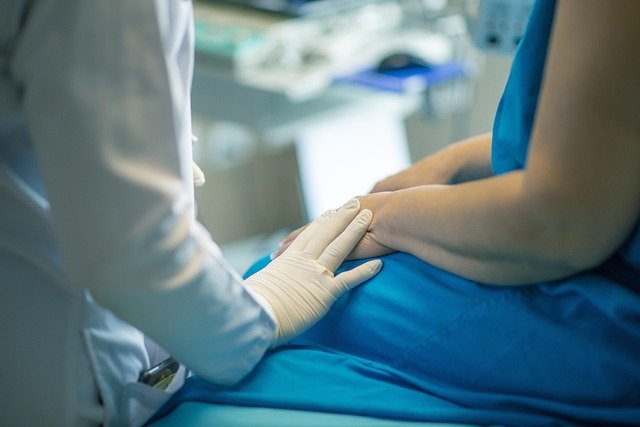Abdominoplasty: Understanding the Surgical Procedure and Recovery
Abdominoplasty, commonly known as a tummy tuck, is a surgical procedure designed to remove excess skin and fat from the abdominal area while tightening the underlying muscles. This article explores the details of abdominoplasty surgery, including the procedure itself, recovery process, and important considerations for patients.

-
Those who have experienced significant weight loss
-
Women who have undergone multiple pregnancies
-
Individuals with weakened abdominal muscles due to aging or previous surgeries
-
People with stubborn fat deposits in the abdominal area
It’s important to note that abdominoplasty is not a weight loss solution, but rather a contouring procedure for those who are already at or near their ideal body weight.
How is the abdominoplasty surgery performed?
The abdominoplasty procedure is typically performed under general anesthesia and can take anywhere from two to five hours, depending on the extent of the surgery. The basic steps of the procedure include:
-
Making an incision across the lower abdomen, typically from hip to hip
-
Lifting the skin to expose the abdominal muscles
-
Tightening and repairing the abdominal muscles if necessary
-
Removing excess skin and fat
-
Repositioning the remaining skin and closing the incision
-
Creating a new opening for the belly button, if needed
In some cases, liposuction may be combined with abdominoplasty to achieve optimal results. The specific surgical approach may vary based on the patient’s individual needs and the surgeon’s recommendations.
What should patients expect during recovery?
Recovery from abdominoplasty surgery is a gradual process that requires patience and careful adherence to post-operative instructions. Patients can generally expect the following during their recovery:
-
Initial discomfort and swelling, which can be managed with prescribed pain medication
-
Restricted movement and activity for the first few weeks
-
Wearing a compression garment to support healing and reduce swelling
-
Drainage tubes may be in place for a short period to remove excess fluid
-
Limited ability to stand fully upright for the first week or two
-
Gradual return to normal activities over 4-6 weeks
-
Full recovery and final results may take several months to a year
It’s crucial for patients to follow their doctor’s instructions carefully and attend all follow-up appointments to ensure proper healing and optimal results.
What are the potential risks and complications?
As with any surgical procedure, abdominoplasty carries certain risks and potential complications. These may include:
-
Infection
-
Bleeding or hematoma formation
-
Poor wound healing or scarring
-
Numbness or changes in skin sensation
-
Fluid accumulation (seroma)
-
Blood clots
-
Asymmetry or contour irregularities
-
Adverse reaction to anesthesia
Patients should discuss these risks thoroughly with their surgeon and disclose their full medical history to minimize potential complications.
How do patients choose a qualified surgeon for abdominoplasty?
Selecting a qualified surgeon is crucial for the success and safety of an abdominoplasty procedure. Patients should consider the following factors when choosing a surgeon:
-
Board certification in plastic surgery
-
Experience specifically with abdominoplasty procedures
-
Before and after photos of previous patients
-
Hospital privileges at accredited facilities
-
Patient reviews and testimonials
-
Clear communication and willingness to answer questions
-
Comfort level during the consultation
It’s advisable to consult with multiple surgeons before making a decision to ensure the best possible fit and outcome.
What are the typical costs associated with abdominoplasty?
The cost of abdominoplasty can vary significantly based on factors such as geographic location, surgeon experience, and the complexity of the procedure. While specific pricing can fluctuate, here is a general overview of potential costs:
| Cost Component | Estimated Range |
|---|---|
| Surgeon’s Fee | $3,500 - $8,000 |
| Anesthesia | $600 - $1,200 |
| Facility Fees | $1,000 - $3,000 |
| Post-Surgery Garments | $100 - $200 |
| Prescription Medications | $50 - $100 |
Prices, rates, or cost estimates mentioned in this article are based on the latest available information but may change over time. Independent research is advised before making financial decisions.
It’s important to note that abdominoplasty is typically considered a cosmetic procedure and is not covered by most health insurance plans. Some surgeons may offer financing options to help patients manage the cost of the procedure.
Abdominoplasty can be a transformative procedure for those seeking to improve the appearance of their abdominal area. By understanding the surgical process, recovery expectations, potential risks, and cost considerations, patients can make informed decisions about whether this procedure is right for them. Consultation with a board-certified plastic surgeon is essential for personalized advice and to determine if abdominoplasty is an appropriate option based on individual circumstances and goals.
This article is for informational purposes only and should not be considered medical advice. Please consult a qualified healthcare professional for personalized guidance and treatment.






